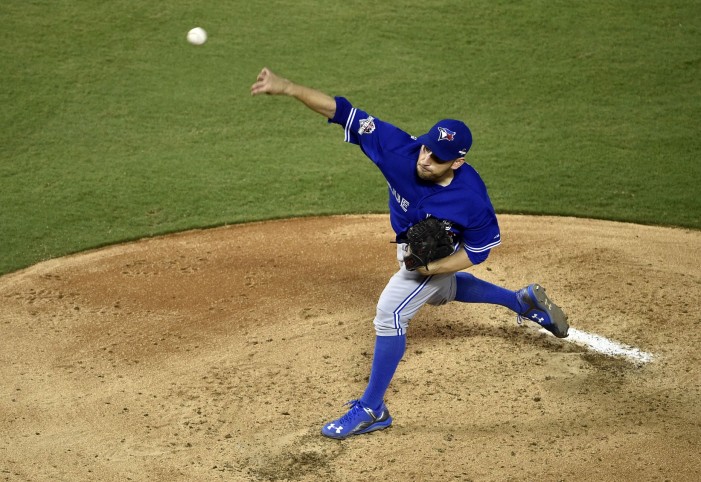Old friend Marco Estrada earned the win in Toronto’s Game Three win Sunday night over the Rangers, behind 6.1 innings and just one earned run. The Rangers could only muster five hits, while Estrada struck out four without walking a batter. The performance kept his Blue Jays alive and will give R.A. Dickey and David Price a chance to claw their team out of a 2-0 hole. In a rotation with those names, a pair of Cy Young winners, Estrada has been the secret weapon.
The trade in which the Brewers sent Estrada to the Blue Jays for Adam Lind was a classic need-for-need trade between teams on entirely divergent path. Estrada didn’t project to be an important piece for the Brewers. But here he is, starring in a postseason series for the American League East champions.
Throughout his ups (3.64 ERA, 9.3 K/9, 1.9 BB/9 in 2012) and downs (4.36 ERA, 29 home runs allowed in 150.2 innings in 2014), Estrada’s changeup was his bread and butter. It was again in 2015, as only five pitchers — Chris Sale, Felix Hernandez, John Danks, Edinson Volquez and Cole Hamels — threw more changeups than Estrada’s 750. The right-hander’s changeup ranked a healthy 29th in whiffs per swing (34.5 percent), ninth in swing rate (59.2 percent), and second in pop-up rate (13 percent of balls in play). In short, that’s a lot of swings and a lot of good results on those swings.
When Estrada’s changeup is working, it’s like the ball goes through a phase shift. What looks like 90 MPH on the outside black from the hand becomes 80 MPH almost a foot out of the zone in an instant as the force of the changeup grip pulls the string on the hitter. And at its best, the fastball and changeup feed off each other. Hitters are left frozen staring at a fastball in the zone or weakly lofting a changeup into the outfield after losing all their momentum swinging for the heater.
So it was Sunday night. Estrada threw 17 changeups, 11 for strikes, and an absurd seven for swinging strikes — a 47 percent whiff rate overall and 63 percent on a per-swing basis. Estrada drew just five swinging strikes with his fastball, but three of those finished off strikeouts; the fear of the changeup in two-strike counts left Rangers hitters vulnerable. Estrada’s fastball was crushed in 2014, as 18 of his 29 home runs allowed came off the pitch and hitters recorded a .498 slugging percentage against it. Sunday night, though, he kept his fastball away from the heart of the plate and used the deception of his changeup to his advantage.
Estrada was representative of one of Doug Melvin’s great strengths as a talent identifier in Milwaukee. He had a knack for picking up players discarded for dead within their previous organizations. Players like Casey McGehee, Chris Narveson, John Axford, and Nyjer Morgan were picked up either in minor-league transactions or for nominal trade costs and all produced well for the Brewers. Estrada had failed to break into the Nationals organization at 26 and had an iffy repertoire and not much velocity. But he had that changeup. It was enough to earn him a chance to start with Milwaukee, and now it’s enough to turn him into a playoff hero, if only a year too late for Brewers fans.
